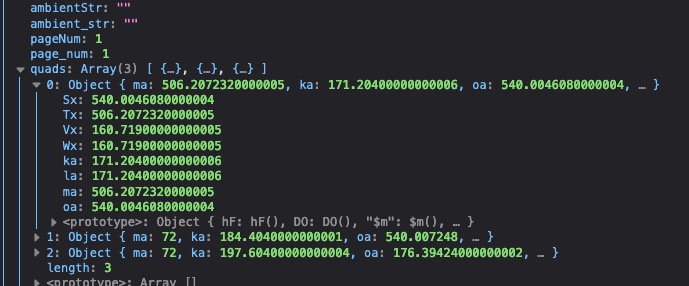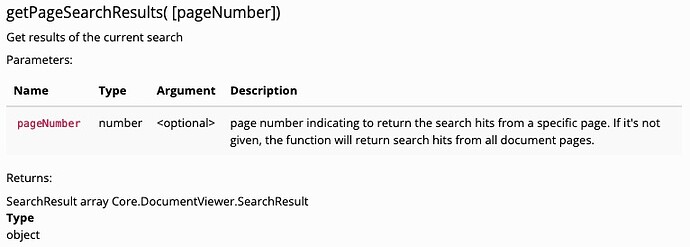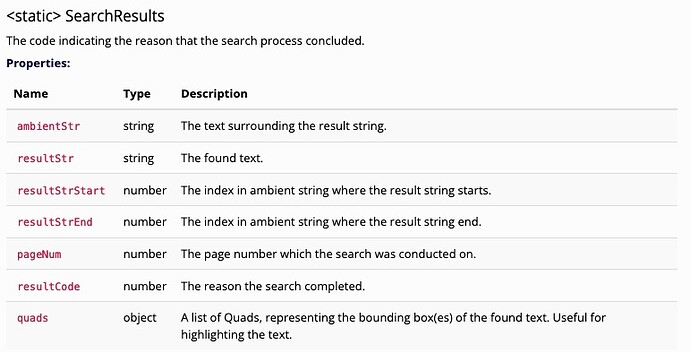WebViewer Version:
Do you have an issue with a specific file(s)? No
Can you reproduce using one of our samples or online demos? No
Are you using the WebViewer server? No
Does the issue only happen on certain browsers? No
Is your issue related to a front-end framework? No
Is your issue related to annotations? No
Please give a brief summary of your issue:
(Think of this as an email subject)
When calling Core.DocumentViewer.getPageSearchResults, your documentation says it returns “SearchResult array Core.DocumentViewer.SearchResult” of type object.
When I search for “SearchResult” in your docs, I only see Core.DocumentViewer.SearchResults (note the plural form). But most of the documented properties match what I’m seeing while debugging our app so I’ll go with it.
Now, there is one property in there named “quads.” What is this? I first thought this should be Core.Math.Quad but its properties in the actual object do not match what’s documented. I also found an entry for Core.Annotations.TextMarkupAnnotation.Quads in your docs but there is absolutely no information on that entry.
Here is what I see in our app. This is from the return value of Core.DocumentViewer.getPageSearchResults:

So what is the type of these objects in the “quad” array? What is Sx, Tx, Vx, Wx, ka, la, ma, and oa?
Furthermore, I found this comment in another topic which shows that these objects have a getPoints method. I can indeed call this method and it looks like it returns Core.Math.Quad objects which are actually useful. But when I search for “getPoints” in your documentation I get nothing relevant to these “quad” objects that I’m getting from Core.DocumentViewer.getPageSearchResults.
I would like to know if these are documented anywhere. If not, please explain what the type of these objects are and what their properties are. Or perhaps this object is meant to be opaque and getPoints is the single public API that we should just use if we need to? If that’s the case, having this actually documented would help to know that intent.
Please describe your issue and provide steps to reproduce it:
(The more descriptive your answer, the faster we are able to help you)
See above.
Please provide a link to a minimal sample where the issue is reproducible:
See above.



